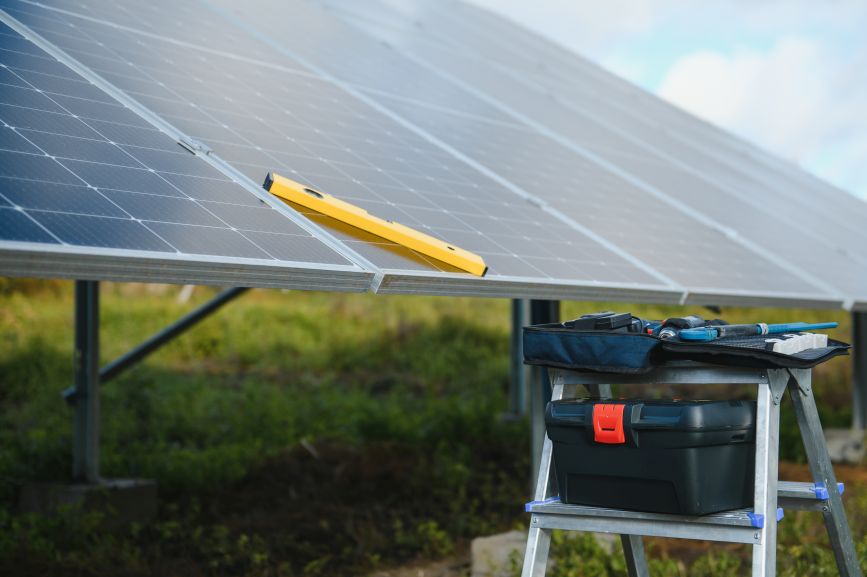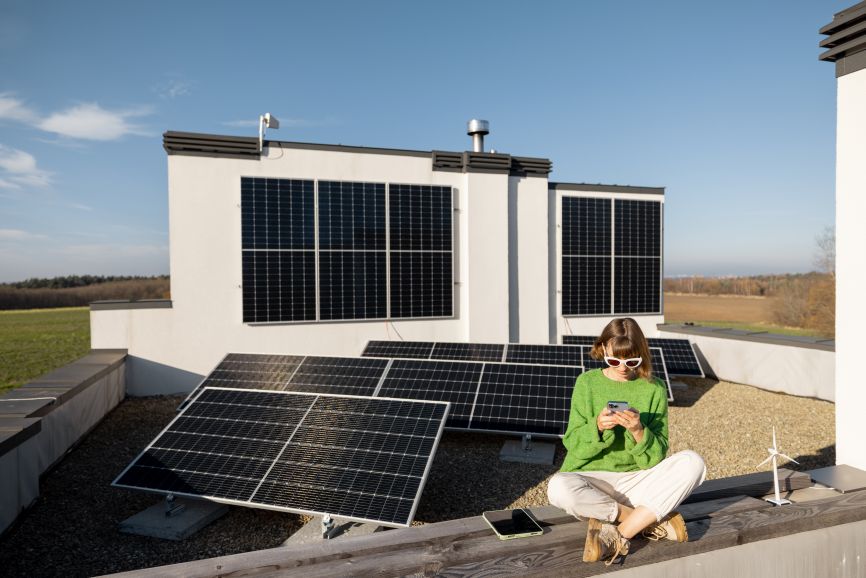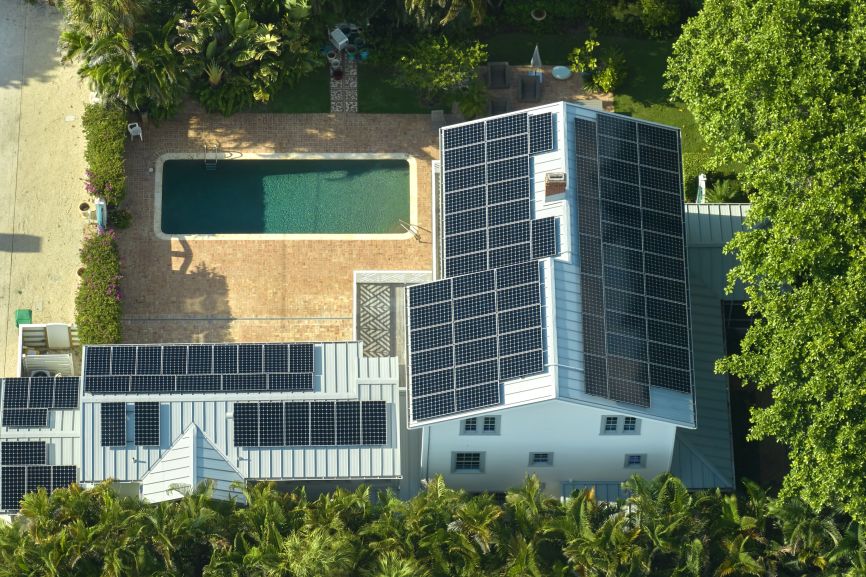Picture this: the power flickers out, your neighborhood goes dark, and yet your lights stay on, your fridge keeps running, and your phone stays charged. That’s the power of batteries charged by solar panels—a reliable backup and a step toward true energy independence.
In 2025, more homeowners, RV travelers, and cabin owners are turning to solar-charged batteries not just for emergencies, but to cut costs and live off-grid with confidence. It’s freedom from rising utility bills, noisy generators, and the stress of blackouts.
In this guide, we’ll walk you through everything you need to know: what size solar panels you need for different batteries, the essential components that make charging safe and efficient, a simple step-by-step setup process, and answers to the most common FAQs. By the end, you’ll see just how easy it is to take control of your own power.
TL;DR: Batteries Charged by Solar Panels
Solar panels can safely and efficiently charge batteries when paired with the right components—most importantly a charge controller. A 12V battery requires proper panel sizing (using the formula: Battery Ah × Voltage ÷ Panel Watts × Sun Hours) to ensure reliable charging. For example, a 100Ah 12V battery takes about 2–3 days with a 100W panel under good sunlight, but far less with higher wattage or multiple panels. Lithium batteries charge faster and last longer than lead-acid options, especially when paired with MPPT controllers.
Real-world factors like shading, weather, depth of discharge, and seasonal daylight all impact charging times. For larger needs, 24V or 48V battery banks with hybrid inverters support whole-home systems. With proper design, batteries charged by solar panels deliver energy independence, cost savings, and blackout protection.
Next step: Get a free quote from Ecosun Works to design your ideal solar + battery setup.
How Solar Panels Charge Batteries – The Basics

At its core, the process is simple: solar panels capture sunlight, a charge controller regulates the flow, and the battery stores the energy. But inside that simple chain, every piece plays a critical role.
Solar panels generate DC electricity, the same type your battery needs. But here’s the catch—panels don’t produce a steady stream of power. Their output rises and falls with the sun, clouds, and temperature. Without regulation, that uneven flow can overcharge or even damage your battery. That’s where the charge controller steps in. It acts like a traffic cop, making sure the current is delivered at the right voltage and the right time.
Some people wonder: why not connect the panel directly to the battery? The truth is, that’s like hooking a fire hose up to a garden bucket—it might fill for a while, but sooner or later, it’s going to spill over or crack. With batteries, that “spill” means shortened life, lost capacity, or worse, a dead cell.
A quick example: charging a 12V lead-acid battery might require around 14–14.4 volts at a controlled current. A lithium battery, on the other hand, prefers a more precise charging curve that only a quality MPPT charge controller can deliver. The takeaway? With the right setup, your panels don’t just make power—they charge your batteries safely, efficiently, and for years to come.
Core Components of a Solar Battery Charging System
Before you can keep your batteries charged by solar panels, you need the right building blocks. Think of it as a chain—each component supports the next, and if one is weak, the whole system underperforms.
Solar Panels are the starting point. Their wattage determines how fast you can charge, and their voltage must match your system. A 100W panel might be fine for trickle-charging a car battery, but for a home backup system, you’ll need higher wattage or multiple panels.
Next comes the Charge Controller. In 2025, MPPT controllers are the gold standard. Unlike older PWM models, MPPT units squeeze every drop of power out of your panels, especially on cloudy days or in colder temperatures. They also protect your batteries from overcharging.
Batteries are where all that energy is stored. Lead-acid and AGM remain budget-friendly but heavy, with shorter lifespans. Lithium-ion is lighter and lasts longer, while LiFePO4 batteries are the premium choice—offering safety, depth of discharge, and thousands of cycles.
If you want to run appliances that need standard wall plugs, you’ll also need an Inverter to convert DC to AC power.
Finally, don’t overlook cables, fuses, and mounts. These ensure safe connections, prevent shorts, and keep your system stable under real-world conditions. Skipping them isn’t just risky—it’s dangerous.
When these pieces work together, you don’t just have solar panels—you have a smart, reliable charging system built to last.
Step-by-Step – How to Charge a 12V Battery with Solar Panels
Charging a 12V battery with solar might sound technical, but when you break it down, it’s a straightforward process anyone can follow. Here’s how to do it right the first time:
Step 1: Connect your battery to the charge controller.
Start with the heart of your system—the battery. Connect it directly to the charge controller, making sure positive goes to positive and negative to negative. This ensures the controller powers up correctly and is ready to regulate the current.
Step 2: Connect your solar panels to the charge controller.
Now bring in the power source. Hook up the solar panels to the controller’s input terminals. Again, polarity matters—get it wrong and you’ll see error lights or worse, fried components.
Step 3: Confirm polarity and secure all connections.
A loose wire or flipped polarity can kill your battery or controller in seconds. Double-check everything before the sun hits the panels. Use proper connectors, tighten clamps, and if possible, add fuses for extra protection.
Step 4: Position the solar panels under direct sunlight.
This is where charging comes to life. Place your panels where they’ll capture the most sun—ideally facing south (in the northern hemisphere) with the right tilt angle. The more direct the rays, the faster and more efficient your battery charges.
Pro Tips:
- Tilt Angle: Adjust seasonally if possible—steeper in winter, flatter in summer.
- Avoid Shade: Even a small shadow on one panel can cut output by 50% or more.
- Monitoring Apps: Many modern charge controllers connect via Bluetooth or Wi-Fi, letting you track voltage, current, and charging progress in real time.
Do it right, and your 12V battery will charge smoothly, safely, and efficiently, giving you a taste of true energy independence.
What Size Solar Panel Do You Need to Charge a 12V Battery?

When it comes to batteries charged by solar panels, sizing your panel correctly makes all the difference. Too small, and your battery never fully charges. Too large, and you’ve wasted money on unused capacity. Fortunately, there’s a simple formula:
(Battery Ah × Voltage) ÷ (Panel Watts × Sun Hours) = Charging Time
Let’s run the numbers. Suppose you have a 100Ah 12V battery. That’s about 1,200 watt-hours of storage. If you’re using a 100W solar panel and you get 5 peak sun hours a day, the math looks like this:
1,200 ÷ (100 × 5) = 2.4 days to fully charge from empty.
For something smaller, like a car battery (50Ah at 12V = 600Wh), that same 100W panel could top it off in a little over one day. On the other hand, a deep-cycle RV battery (200Ah at 12V = 2,400Wh) would take closer to 5 days with just one 100W panel—making multiple panels or higher wattage a smarter choice.
Real-world results will always vary. Panel efficiency, wiring losses, seasonal sun hours, and even temperature affect performance. A 100W panel on a cloudy day might only produce 30–50W. That’s why most people size slightly above their theoretical needs—to ensure reliable charging no matter the conditions.
The bottom line? Match your panel size to your battery capacity, your location’s sun hours, and your usage goals—and you’ll always have power when you need it.
How Many Solar Panels Do You Need?
Once you know the size panel required, the next question is: should you go with one big panel or multiple smaller ones? The answer depends on space, budget, and flexibility.
Take this example: you need 200 watts of solar. You could buy a single 200W panel or set up two 100W panels. The performance is essentially the same, but the trade-offs differ. A single 200W panel is easier to wire and usually cheaper per watt. Two 100W panels, however, give you more flexibility in placement—ideal for RV roofs, boats, or smaller areas where one big panel won’t fit.
When you scale up, wiring matters too. Connecting panels in series increases the voltage while keeping amperage steady—great for reducing power loss in long cable runs. Connecting them in parallel keeps voltage the same but doubles the amperage, which is often better for 12V battery systems. Many modern setups use a hybrid of both for efficiency and safety.
The bottom line: whether you choose one large panel or multiple smaller ones, the goal is the same—make sure your array matches your battery and controller so you get steady, reliable charging every single day.
Charging Times – Real-World Scenarios
So how fast can you expect your batteries charged by solar panels to fill up? Let’s take a look at real-world numbers.
A 400W solar panel in good sunlight produces about 2,000 watt-hours per day (assuming 5 peak sun hours). That’s enough to fully recharge a 12V 100Ah battery (≈1,200Wh) in less than a day. A larger 200Ah battery (≈2,400Wh) would take a little over a full day of solid sun to recharge.
But battery chemistry changes the equation. Lead-acid batteries charge slower because they can’t accept high currents once they pass 80% capacity—they “trickle” the rest of the way. Lithium batteries, on the other hand, can accept higher charging currents almost all the way to full, meaning faster, more efficient charging.
Another factor is depth of discharge (DoD). A lead-acid battery shouldn’t be drained below 50%, so you’re often only replacing half its capacity. Lithium batteries, especially LiFePO4, can safely be discharged 80–90%, which means you’ll be charging more—but with a longer lifespan.
And let’s not forget the environment. Temperature, shading, and seasonal daylight all play big roles. A cold, clear day can boost panel efficiency, while a hot summer afternoon may reduce output. Even partial shading on one panel can cut system performance dramatically.
In short: a 400W panel can be a powerhouse, but actual charging times depend on your battery type, how much you’ve discharged it, and the conditions under the sun.
Special Cases & Common Questions
When it comes to batteries charged by solar panels, everyone has a few “what if” scenarios. Let’s clear them up.
Can I charge a battery without a charge controller?
Technically, yes—but it’s a bad idea. A solar panel can overcharge a battery in just a few hours, leading to heat buildup, damaged cells, and even safety risks. A charge controller is your first line of defense and should never be skipped.
What batteries can I use with solar panels?
Almost anything—from car batteries and marine deep-cycle units to RV batteries and full-scale off-grid storage banks. The key is choosing a battery designed for deep cycling if you’ll be charging and discharging daily.
What solar panels can I use to charge a battery?
Rigid glass panels are the most efficient and long-lasting, but flexible panels are great for curved surfaces like RV roofs. Portable foldable panels work well for camping or emergency kits.
How efficient are solar panels at charging batteries?
In 2025, panel efficiency averages 20–23%, with premium models pushing higher. Paired with an MPPT controller, you can capture and store energy far more effectively than older systems.
What’s the impact of weather and temperature?
Clouds, shade, and shorter winter days slow charging. Cold weather can actually boost panel output, while extreme heat reduces it. Always factor in your climate when sizing a system.
Maintenance requirements
Keep your panels clean, check controller settings occasionally, and monitor battery health. Lithium batteries need almost no upkeep, while lead-acid types require regular charging and sometimes water top-ups.
Bottom line: With the right mix of panels, controller, and batteries, you can charge safely, efficiently, and reliably—rain or shine.
Beyond 12V – Scaling Up for Larger Systems

A single 12V battery is fine for an RV, a boat, or a small off-grid cabin. But when you’re powering an entire home—or even just a workshop—12V quickly becomes limiting. That’s where 24V and 48V systems come into play.
By stepping up the voltage, you can move the same amount of power with less current, which means thinner wires, lower losses, and greater efficiency. It’s the difference between running a trickle charger and running a household refrigerator.
Larger setups often use battery banks—multiple batteries connected in series or parallel—to expand storage. Pair that with a hybrid inverter, and you’ve got the best of both worlds: seamless switching between solar, battery, and grid power.
This is the foundation of a whole-home solar + battery system. Your panels feed into a high-capacity storage bank, the inverter manages distribution, and suddenly blackouts, high energy bills, and peak-hour surcharges become problems of the past.
Scaling up isn’t about complexity—it’s about designing smart. Start small with a 12V battery, and when your needs grow, 24V or 48V makes expanding both simple and future-proof.
Conclusion – Smarter, Safer Solar Battery Charging
Getting batteries charged by solar panels isn’t just about plugging in and hoping for the best—it’s about smart design. The right panel size, a reliable charge controller, and the right battery chemistry work together to create a system that’s efficient, safe, and built to last.
In 2025, modern lithium options like LiFePO4 have made solar storage more practical than ever, delivering faster charging, deeper discharges, and thousands of cycles. Pair that with an MPPT controller and properly sized solar panels, and you’ve got a setup that powers your life reliably—whether you’re off-grid, on the road, or at home.
Safe, efficient, and future-ready—that’s the promise of solar-charged batteries.
Ready to Power Up with Solar? Get a Free Quote Today
Whether you’re charging a single 12V battery for weekend adventures or planning a full home backup system, the right solar design makes all the difference. With expert guidance, you’ll avoid costly mistakes, maximize efficiency, and enjoy the confidence of always having power when you need it most.
At Eco Sun Works, we connect you with trusted, certified professionals who design safe, efficient systems tailored to your exact needs. From simple off-grid setups to complete solar + battery solutions, we make energy independence easy and affordable.
Get your free, no-obligation solar quote today—and discover how much you could save by powering your future with the sun. Call us today.
